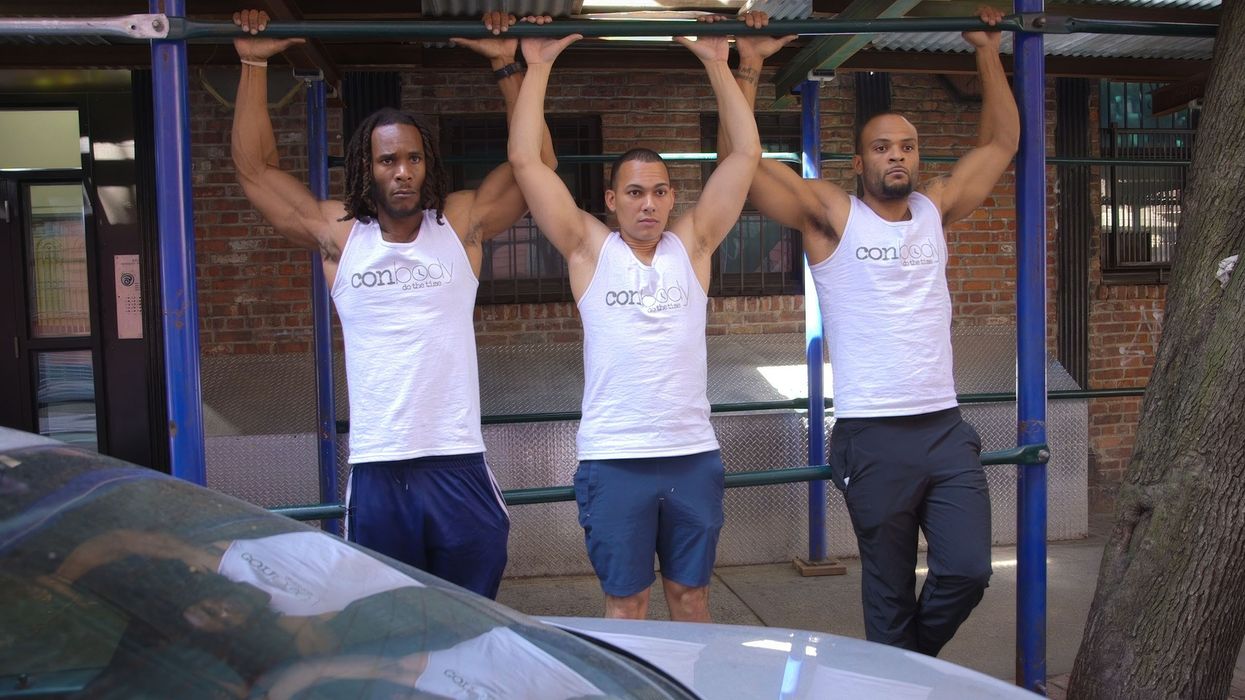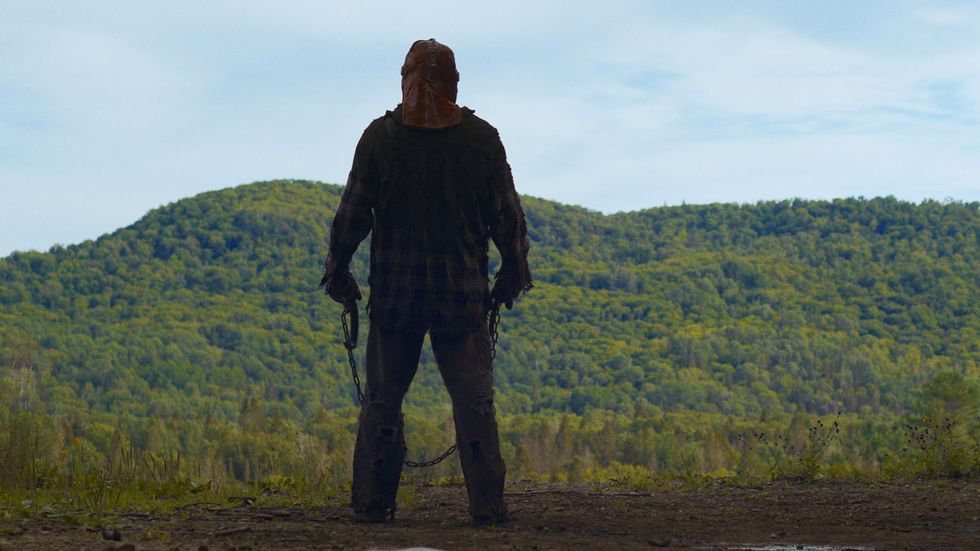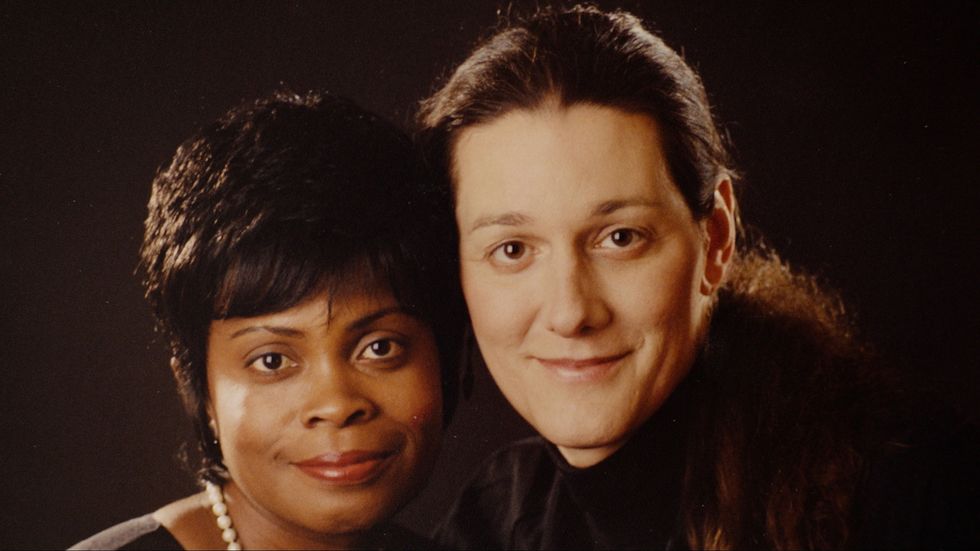The Biggest Challenges for 2024 Sundance Creators (and How They Overcame Them), Pt. 3
Creative problem-solving, tight schedules, low budgets, uncooperative animals—these filmmakers have seen it all, once more!

Conbody VS Everybody
How do you get the money shot, the big reveal, the twist that your documentary needs? How do you grapple with people telling you "no"? What happens if the ending of your short film just doesn't work, and you have to rewrite it on the spot? How do you integrate new visuals and technology to better reflect your subject matter?
What about if you get—gulp—arrested while making your film?
Believe it or not, we've got all these production trials and tribulations in the stories below, straight from Sundance filmmakers themselves. Making indie films is hard—running and gunning can be a nightmare sometimes. But as you'll see, it can all be beautiful, and worth it, in the end.
Below, you'll find filmmakers' answers to the question, "What were some specific production challenges that were unique to your project?" Enjoy!
Alex Hedison, director, ALOK
A production challenge was light, always chasing the light. I was grateful to Dylan for choosing to work with the RED camera and Lomo lenses. We were able to shoot for longer and some of our best shots were the last ones. Other than that, the biggest challenges was figuring out how to fit over 40 hours of footage into 19 minutes.
Daniel Barosa, director/writer/producer, Boi de Conchas (The Shell-Covered Ox)
We did have to bring an ox to the beach. This was no easy task. While on location scouting, we discovered a beach nearby that actually has lost oxen roaming around at times. But this is filmmaking and, unfortunately, you can't leave anything to chance. So we went after an animal wrangler specialized in film production. He worked with all sorts of animals but never had to bring an ox to the beach before. It isn't a place an ox is used to visiting, so as soon as we had the animal free on location, he would just start to run off, excited to take a dive or lay on the soft sand. We found that out the hard way, and in the end, had to have the animal guided with a special rope by the wrangler which was later erased in post-production.
We also had interesting challenges while shooting in some of the locations. Since they were all real places and most worked 24/7, we had authorizations to film in each establishment while still functioning with the daily routines. The fishing boat, for example, was this small artisanal vessel that we had to fit 5 crew members, plus 2 actors (and it was still loaded with the owner's catch of the day). In the fish market, we basically sealed off a small part of the place with giant black curtains, but all around us, fishermen were walking around with boxes of shrimp, and vendors were yelling out the latest shipment. While all this made filming more complicated, it also added an extra layer of realism that is somehow imbued in the film.
Rich Peppiatt, director, Kneecap
Belfast is still a divided city between Catholic and Protestant communities, so where was safe to shoot was always a consideration. There was one bridge I was determined to capture a chase scene over because it had the perfect curvature to give us the Lawrence of Arabia shot I was after. Only problem was that one of the most fervent Protestant estates was located right underneath it.
So it was decided with the locations team that early doors on a Sunday morning was our only window—our thesis being that most of the people who might look to disrupt the shoot would be nursing hangovers from the night before. Not only did it work, it probably turned out to be the most iconic scene in the film.

Chris Nash, writer/director/prosthetic effects, In a Violent Nature
Our film is a traditional '80s slasher film, but told from the perspective of the slasher itself (however, this doesn't mean it was shot POV, only that the camera stays with the slasher character for the duration of the film, and they would be in nearly every shot). Although we suffered common pitfalls of low-budget filmmaking, the nature of the film dictated that the majority of our shooting would take place in the isolated wilderness, which means we were at the mercy of the weather, insects, and God.
After persevering through a week of what the weather bureau called "unprecedented weather conditions," three days into the second week of shooting—and the night before one of the most costly days on our schedule—our lead actor, the slasher himself, suffered a sudden medical ailment (which wasn't COVID—stop asking). and could not return to the production. Seeing as this character appeared fully masked and in costume the entire film, we rushed to find a replacement, going through a couple of temporary stand-in slashers before finding someone to step into the slasher's shoes for the remaining two weeks of principal photography.
However, once we wrapped principle photography and did a rough assembly of our footage, we realized there were significant differences in the physical performance of our slashers—even though it wasn't entirely apparent on the day. As well, because of concessions we had to make due to weather, the remote locations, and other production shortcomings, the movie wasn't feeling the way we had envisioned. Tone is very important for this film, and we were way off-key. After much consideration, with roughly 70% of the movie shot, the producers and I made the decision to tighten our belts, head to my hometown, call in every favor from friends and family I could, strip down to a skeleton crew, and reshoot the film using what was, more-or-less, our post-production and contingency funds.
It was an enormous struggle; but, in the end, the resulting film was much more aligned with what we had sought to achieve.
Arun Bhattarai, director/DP/producer, and Dorottya Zurbó, director, Agent of Happiness
Filming in Bhutan is difficult because it is very mountainous and most places are not accessible. Our film is a road movie so we had to follow our characters through the nooks and corners of the country which were sometimes quite hard to reach. There are quite a few behind-the-scenes stories we have, but one vivid memory that comes to mind is when the car of our happiness agents got stuck in the mud, and we spent a day along with our characters, trying to take it out from there. Finally a good samaritan used his tractor to pull us out of this dirt, literally!
Jasmin Baumgartner, director, Bye Bye, Bowser
We had the idea of the film on our last day at a lake in late summer and we had our last day of shooting seven to eight weeks later. It was very intense. We had to do it right now and borrowed 10K from friends having a successful business without knowing if we get this money back later. We asked all our friends to help, and thankfully we had fun too, and they are still our friends.

Eric Phillips-Horst, series DP, Conbody VS Everybody
Debra was always interested in getting as many people in the frame as possible. She was interested in the wide shots where multiple bodies were either engaged in a group conversation or focused on their own tasks, in hands and body language showing as well as telling, in the context of the room providing a world that the characters inhabit and play off of. We developed a shorthand for this image with the word tableaux. It was the code word, often whispered, to hold the frame wide and resist the urge for traditional documentary coverage. It was a way of representing the CONBODY team as a whole, each with their specific stories, but all working towards the common goal.
Debra is incredibly skilled at recognizing what content will remain salient with an audience, and always keeps a small notepad on set, scribbling down iconic lines she hears or connections she is making. As she moves through filming a scene, she keeps us in the know of what feels interesting, so we can keep an eye out for it as well, resulting in us making content and editorial decisions in sync on set.
Specific story from Eric: Shooting the election night of our main character’s brother, Chris Marte, proved to be an incredibly fun challenge. Debra and I were solo—we did not have a sound person that day—we put a lavalier mic on our main character, and followed him around as well as any action we found interesting, over the course of the Voting day. Bouncing from polling place to electioneering outside of apartment buildings, and concluding with a thrilling suspense scene at the campaign headquarters, we managed to shoot what felt like a short film unto itself over the course of 10 hours.
Having the microphone on our character provided us with unprecedentedly intimate access as he was whispered the election results, and we were able to position ourselves perfectly for the big reveal. It was truly a narratively satisfying and artistically fulfilling experience.
Tory Stewart, editor/producer, Conbody VS Everybody
A production challenge we faced was keeping our workflow consistent and our footage organized over the course of the years of filming. We went through multiple cameras, and crew configurations varied depending on the nature and location of the shoots. Since the filmmaking team was local to the story, we had both the opportunity to and the challenge of jumping to cover events as they happened/at the last minute if need be. This meant we quickly had to become comfortable with the fact that different cameras would be used and, while we wanted to be as consistent as possible, we couldn’t get hung up on absolutely matching looks from scene to scene.
As filming went on, we began to appreciate the way the look of the film changed over time and hinted at that intimacy of a crew of folks tracking a story over many years. Back at the office, we had to keep things super organized and amassed many more hard drives than we were prepared for when we started the project!
William Rosenfeld, producer, It's What's Inside
Principal photography was conducted in November 2022 in Portland, OR, on a schedule that was over 50% night shoots. If you've ever spent a night in Portland in November, you know how cold and rainy and bleak it can be. Aside from making sure that we kept up morale under these less-than-cheery conditions—with top-tier catering and craft services, massage chairs, and a steady flow of hot chocolate—we had to shoot the actors without them looking like they were freezing. Lots of arctic-weather coats and heavy-duty outdoor heaters were procured, but we also had the actors take breaks to head inside and warm up.
We also filmed primarily in a single location, a gigantic house which was impressive but which could have looked like just another Airbnb that a film production rented. After the art team had prepared everything and we thought we were good to go, Greg, our director, felt that we had to really amp up the look of the house to make it into the special and one-of-a-kind environment that the script demanded. As producers, we had to increase the art budget and move quickly in tandem with the art department in order to get the look of the location in line with Greg's vision. It was worth the hassle and the expenditure. The improved look gave the camera a whole new menu to explore and the cast a veritable universe to play in. I'm not sure the film would have come out quite so well, on multiple levels, had we not made this additional investment, literally and metaphorically.
Greg Jardin, director/writer/editor/VFX, It's What's Inside
Probably the biggest production challenge had to do with the logistics of filming due to the byzantine elements within the script. But our AD team were rockstars!
Jason Baum, producer, It's What's Inside
The plot of It’s What’s Inside is fairly complex which made keeping all the various departments aligned a challenge. Nothing gives me more joy than seeing a clear spreadsheet and that’s what we did to help keep track of our characters as we shot out of chronological order. It was fun to see how the different departments took this mental exercise and found ways to enhance the story even further as it pertains to their specific expertise. The complexity actually informed their creative choices instead of being frustrating. However, there were many meetings and conversations where someone would have a brain freeze look on their face as they try to process parts of the plot, and I always felt like the best way to deal with that was to just let them just take the few minutes to figure it out on their own! Honestly, I couldn’t even be certain that I was right half the time.

Pete Sillen, director/DP, Love Machina
Producer Brendan Doyle and I have been working on the project since 2017. During that time the film has continued to evolve and take shape. Martine and Bina were always supportive, but after they saw the first rough cut in 2021, they began to give us more access to film with them. That was our first big production milestone which really changed the tone of the film.
The second was the release of ChatGPT in late 2021. Martine and Bina are futurists, and their vision of digital consciousness is a big part of their love story. I had talked with them about the development of what they call mindware, but ChatGPT was literally seeing those software conversations come to life, and it happened fast.
Layering in ChatGPT to Bina48's AI has been an impressive transformation that we were very lucky to be able to document.
No Film School's coverage of Sundance 2024 is brought to you by Canon.
- Sundance 2024 | No Film School ›
- The Biggest Challenges for 2024 Sundance Creators (and How They Overcame Them), Pt. 1 ›
- Party at Sundance with No Film School and Canon — You Might Win a Cinema Camera ›
- Sundance Releases Its Top 10 All-Time Debuts ›
- These are the challenges 2024 Sundance creators tackled. ›
- We speak with In a Violent Nature director, Chris Nash. ›
- Josh Margolin uses Adobe Premiere for “Thelma” to Sundance ›












